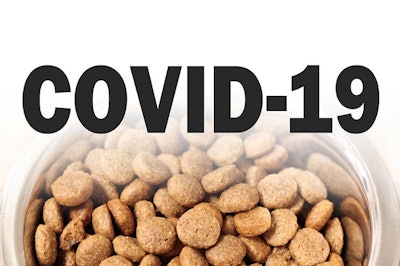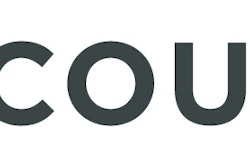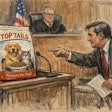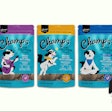
The COVID-19 pandemic forced changes on pet owners, compounding some ongoing trends while redirecting others. Some of these trends may continue through 2020 and beyond. During Petfood Forum CONNECT, a panel of pet food industry professionals discussed how the COVID-19 pandemic would affect dog, cat and other pet food market trends, along with other prevailing movements in consumer demand.
1. Pet food and treat retail changes
The pandemic seems to have accelerated pet owners’ acceptance of e-commerce. Along with simply selling products online, the shift to e-commerce alters other aspects of pet food marketing, Lynn Dornblaser, director of innovation and insight at market research firm Mintel, said.
The real opportunity for companies is to find all the different ways that they can get their products out there in front of consumers, she said. Whether it's online or in store, pet food companies need to use the best aspects of each way to communicate what's important about their products.
“That might be optimizing what it looks like on screen, or using an online platform to talk in a lot of detail about the products themselves,” Dornblaser said.
While e-commerce takes ground from brick-and-mortar, mass market and pet specialty retailers will continue to see changes in the products they offer.
“We've all seen over the last half a dozen years or so, the pet food aisles’ overall massive expansion,” Max Davis, business unit manager for Waldner Americas, a laboratory and other equipment supplier.
With that overall expansion, certain varieties gained shelf space relative to others:
- wet pet food in cans
- growing pet food aisle for dry pet food
- exponential expansion for wet pet food in caps and trays
Davis also sees superpremium fresh, such as frozen and refrigerated pet food, growing.
2. Humanization leading to premiumization of pet food
Wider ranges of people in the United States, China, Europe and other regions now consider pets to be members of the family. With this humanization of pets, comes a humanization of pet food. The pandemic may have strengthened this trend.
“Our pets are like our children,” Dornblaser said. “Our connections have really grown. Two-thirds of consumers say that they're spending more time with their pets. There's a lot of opportunity to give them the very best that we can.”
Giving pets the best possible means high quality, organic, natural products like those parents feed to their children, Davis said.
3. Pet food ingredient and packaging changes
Freeze-dried pet food ingredients, including raw, were doing well before the pandemic and may remain a strong trend. Amy Patterson, general manager for freeze-dried protein producer Petsource by Scoular, said there may be reasons for this.
“This is driven by three key drivers. The pandemic uncovered supply chain and availability concerns as everyone rushed to stock up and ensure continuity for their pets,” she said. “Across our Scoular network, we have seen increasing requests for local manufacturing partners, wherever in the world. We've also seen our brand customers working to identify contingencies supplier options.
“Secondly, even prior to the influence of COVID, we saw the pet owners preferred having the option to feed safe, shelf stable ingredients, whether at home or on the go,” she said. “Especially during these stock-up events, and quarantine time periods, shelf stable ingredients have proven to be a wonderful way to prepare for unknown market disruptions.”
Third, pet owners now have increased opportunities to feed and treat their pets, and freeze-dried ingredients are a part of that.
Unrelated to the pandemic, Davis sees a great deal of growth in multi-chambered cups.
“People are now looking to buy wet pet food as a treat item, not replacing all food consumed, but as a higher portion of them,” he said. “They want something where they can get two meals at once.
4. Economic effects of pandemic
The pandemic caused economic turmoil around the world, and pet food customers may change their spending patterns. However, the humanization of pets and their expanded role as companions during the pandemic may act as a bulwark against pet owners lowering their quality standards.
“There will be a most definite recessionary impact on pet food and pet products,” Dornblaser said.
Davis noted that this may be an opportunity for a private label manufacturer may release a premium product on their own label. And this is a cost saving issue without giving up all the quality.
“Even in uncertain times pet owners want to spoil their pets and continue feeding optimal food,” Patterson said.

















